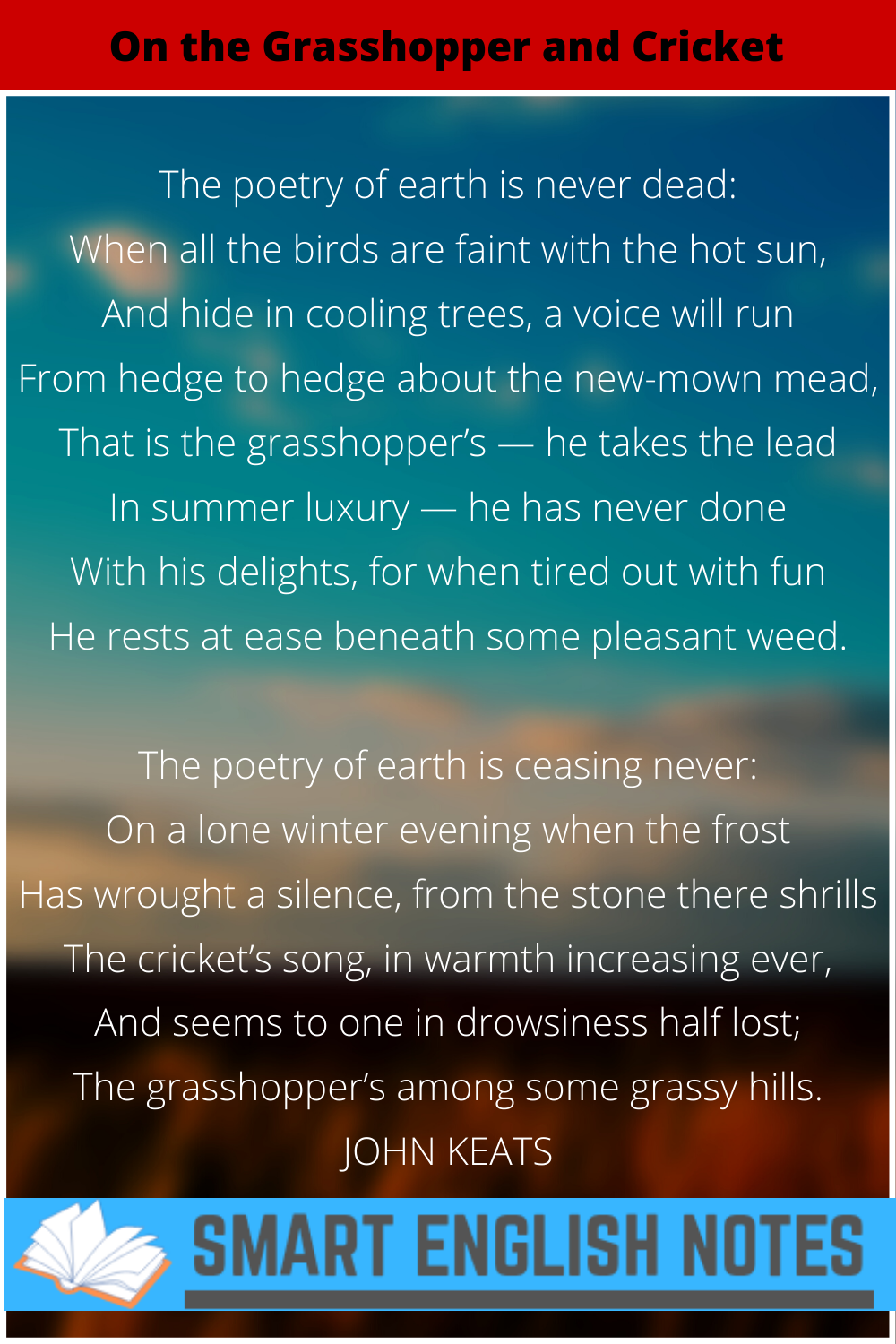On the Grasshopper and Cricket
Introduction: On the Grasshopper and Cricket is a nature poem by John Keats. The poem is made up of two sentences. It reveals Keats’ love of nature. He connects poetry and nature, recognising both as ongoing. On the surface, Keats’ poem appears to be a simple description of natural things, but it could also be interpreted as a commentary on life. Nature’s poetry is passed down from bird to grasshopper and then, in winter, to cricket in the form of nature’s song. Similarly, humans pass things down from generation to generation, including poetry. The grasshopper is known for its leisure in fables such as the grasshopper and the ant.
Summary
‘On the Grasshopper and Cricket’ is a fourteen-line poem or sonnet in which the poet conveys his belief that nature always inspires a poet to produce poetry in its different forms. For John Keats, seasons may change, but nature never ceases to inspire and sing its songs. When the birds stop singing in the heat of summer, the earth sings on. The birds take refuge in the trees’ shade and go silent. In the midst of the storm, a voice runs from hedge to hedge, taking the lead and singing delightfully. The grasshopper’s voice is heard here. He sings incessantly, but when he gets tired, he lies down beneath some pleasant weed. The bird can also be found during the harsh winter months.
Birds also stop singing in the dead of winter. There is a deathly silence that seems to have engulfed nature. Frost spreads its blanket over all elements of the nature. Despite this, a sharp sound emanates from behind the stones, and it is the cricket singing. The warmth that had been lost is restored by the cricket’s song. When people hear the melody, they believe the grasshopper is singing from the grassy hills.
Analysis
It is not a story-poem. Grasshopper is an emblem of the sweltering summer. Cricket is a symbol of a harsh winter. Every poet has found enormous beauty and poetry in spring and excellent weather. Keats is an outlier. He finds nature beautiful in all seasons, including the hot summer and chilly winter.
HOT SUMMERS
The earth is always singing. The birds stop singing in the hot summer. They seem to have fainted in the hot sun. They hide themselves in cooling trees. At that time a grasshopper can be seen flying from hedge to hedge and singing delightfully. He sings tirelessly. When tired, he rests beneath some weed.
COLD WINTERS



